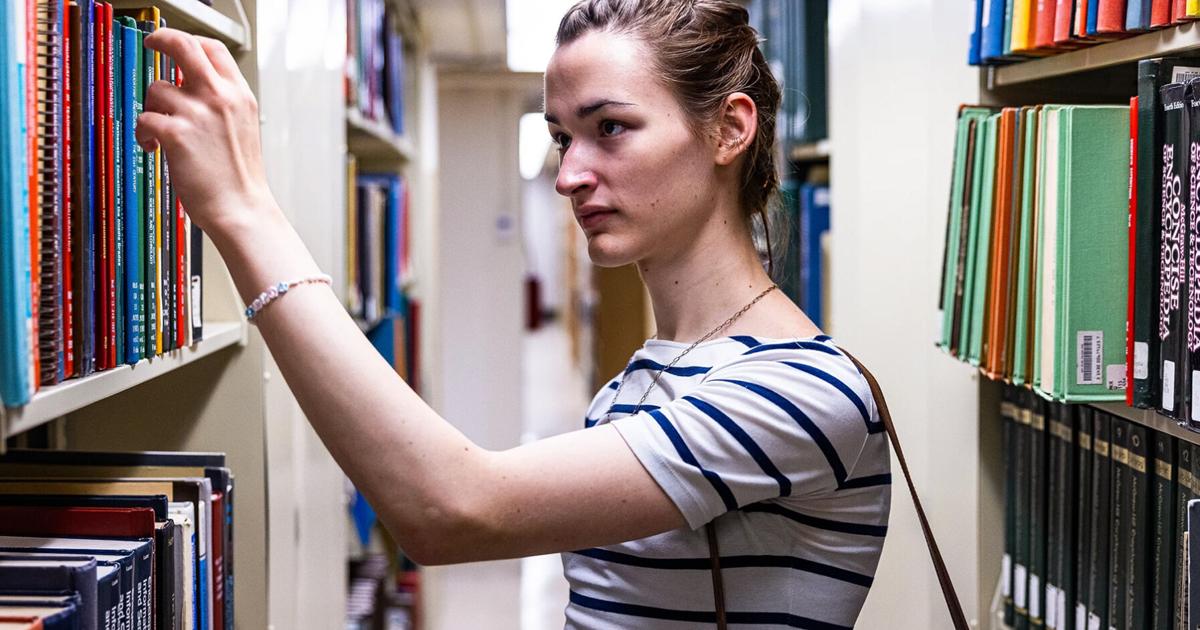Hannah Cairo is in the first year of her mathematics graduate program at the University of Maryland.Like her peers, she does research and is a TA on campus.
But unlike most Ph.D. students, Cairo is only 18 years old.
Born and raised in the Bahamas until age 16, Cairo was homeschooled as a child but found the experience isolating. Having surpassed the high school curriculum, she applied to college when she was 14 and was accepted into UC Davis.
“My parents didn’t want me to go because they thought I was too young and also they couldn’t move (to the U.S.), and so they told me to defer,” Cairo said.
Cairo participated in a summer program at the Berkeley Math Circle, founded by UC Berkeley professor Zvezdelina Stankova, who advised Cairo to take graduate classes at UC Berkeley through concurrent enrollment instead of enrolling at UC Davis.Cairo later became an instructor for the math circle to support the program as it navigated stringent fingerprinting requirements because she was not required to be fingerprinted as a 17-year-old.
Cairo arrived at UC Berkeley interested in number theory and algebraic geometry but quickly realized that she didn’t like those fields of math after taking a few classes. She began to explore other areas.
“I saw this class offered by (campus professor) Ruixiang Zhang and it was about topics in Fourier restriction theory,” Cairo said. “I was not very enthusiastic about it, but I figured … might as well try it.”
For a homework exercise, Zhang asked students to prove a special case of the Mizohata-Takeuchi conjecture, a 40-year-old unproven statement in harmonic analysis. Put simply, harmonic analysis is the study of periodically recurring functions, such as sound waves.
Cairo uses an analogy of waves on a pond to describe the Mizohata-Takeuchi conjecture.
“If you drop a stone in the pond, then you’re going to see all of these circular waves spreading out,” Cairo said. “If you drop one stone, you get these circles, and if you drop two stones, you get these interesting patterns and this interesting overlap. And so the idea is, the shapes that we get, are they made of lines? The conjecture says that it’s made of lines.”
Zhang encouraged students to explore other parts of the Mizohata-Takeuchi conjecture as well, so Cairo began to work steadily at it.
She found what she thought was a solution, but after presenting it to Zhang, he pointed out a “silly mistake.” The next time, Cairo came back and tried to disprove it, only for Zhang to point out another mistake.
Cairo described herself wavering back and forth between trying to prove and disprove the conjecture, before eventually questioning if the conjecture was true at all.
“I was trying to prove it and I realized the kind of thing that I would need to prove in order to prove it,” Cairo said. “And I just couldn’t prove that thing — I was stuck on that. And eventually, I wondered if it’s even true.”
Ultimately, Cairo disproved the conjecture by showing that the waves in the hypothetical pond example are not made of lines. She added that it took “many weeks” to convince Zhang of her solution, as it was a “complicated construction.”
After taking a break, she discovered a simpler counterexample that arranges the stones in a way that creates patterns of waves that are not made of lines. On Feb. 10, she submitted her findings to arXiv, a popular platform for researchers to publish their papers.
Cairo is now working on other unsolved problems related to the Mizohata-Takeuchi conjecture.
“The conjecture said that certain things are made of lines, right? And I found an example where it takes an infinite number of lines,” Cairo said. “Now, there is another conjecture, the local Mizohata-Takeuchi conjecture, which says that, yes, there can be an infinite number of lines, but that infinity is like a small infinity. And so far, we don’t know how small that infinity is. And so in my next paper, I want to find out how small that is.”
Though Cairo’s mathematical abilities far exceed most undergraduate students, her graduate school application was rejected at seven of the nine universities she applied to, including UC Berkeley. Many cited her lack of a bachelor’s degree. In the end, two schools offered her admission to their Ph.D. programs: Johns Hopkins University and the University of Maryland.
With President Donald Trump’s administration cutting research funding and promoting anti-LGBTQ+ rhetoric, Cairo, who is transgender, said she doesn’t know how much longer she wants to stay in the U.S. However, she wants to be openly trans to show cisgender people that “trans people do not have to be confined to this idea that they have in their head.”
“(The Trump administration wants) people to stop talking about trans people,” Cairo said. “I think that if everybody just follows that, then that becomes the rule. But he doesn’t have that authority. So it’s not really the rule. The only thing that makes it the rule is if people follow it. And so I think that it’s important to resist that.”

